Sarah Sundin's Blog, page 301
May 17, 2016
Anchor in the Storm – World War II Destroyer Tour
 For over one hundred years, destroyers have served as versatile naval workhorses. In World War II, US destroyers escorted convoys, hunted submarines, fought surface battles, bombarded shore positions, rescued downed airmen and stranded sailors, and served as radar pickets to detect and fight incoming kamikaze flights.
For over one hundred years, destroyers have served as versatile naval workhorses. In World War II, US destroyers escorted convoys, hunted submarines, fought surface battles, bombarded shore positions, rescued downed airmen and stranded sailors, and served as radar pickets to detect and fight incoming kamikaze flights.
In my new novel Anchor in the Storm, Ens. Arch Vandenberg serves on a fictional Gleaves-class destroyer, the USS Ettinger. While researching the Waves of Freedom series, I visited two World War II destroyers, the Fletcher-class USS Cassin Young at the Charlestown Navy Yard in Boston and the Gearing-class USS Joseph P. Kennedy, Jr. at Battleship Cove in Fall River, MA. Follow the links for a photo-tour of a World War II destroyer:
Part 1—Topside: the various destroyer classes, and a bow-to-stern tour of the main deck.
Part 2—Below Decks: living quarters and working stations.
Today in World War II History—May 17, 1941

American pilots of No 71 ‘Eagle’ Squadron rush to their Hurricanes at Kirton-in-Lindsey, 17 March 1941 (Imperial War Museum)
75 Years Ago—May 17, 1941: First US pilot volunteer with RAF Eagle squadron killed in action, Mike Kolendorski.
May 16, 2016
Today in World War II History—May 16, 1941
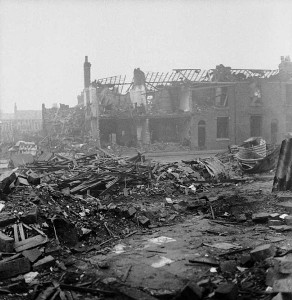
Birmingham after a Luftwaffe raid, 1940 (Imperial War Museum)
75 Years Ago—May 16, 1941: Blitz officially ends with Luftwaffe attacks on Birmingham and West Midlands; overall 43,000 civilians have been killed in the Blitz. Luftwaffe bombs RAF airfield at Habbaniya, the first German planes seen in action in Iraq.
May 15, 2016
Today in World War II History—May 15, 1941
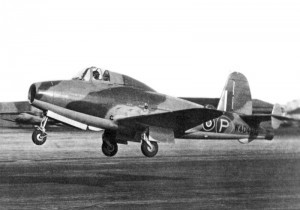
Gloster E.28/39, the first British aircraft to fly with a turbojet engine (British government photo)
75 Years Ago—May 15, 1941: Gloster-Whittle E28/39 jet engine designed by RAF’s Frank Whittle powers aircraft in flight for first time. British recapture Halfaya Pass on Egypt-Libya border from Germans. Joe DiMaggio begins 56-game hitting streak for New York Yankees.
May 14, 2016
Today in World War II History—May 14, 1941
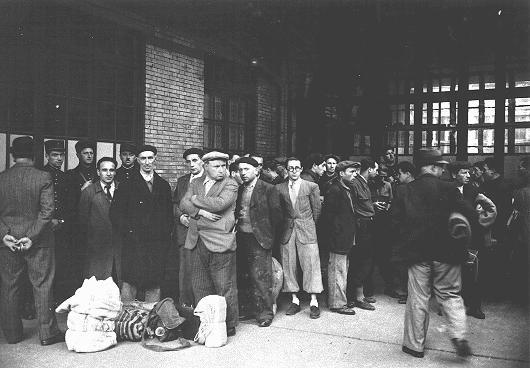
After the first roundup in Paris, French police escort foreign Jewish men from the Japy school to deportation trains at the Austerlitz station. Paris, France, May 14, 1941.
(Bibliotheque Historique de la Ville de Paris via US Holocaust Museum)
75 Years Ago—May 14, 1941: Nazis arrest 3600 Parisian Jews. British forces approaching from Sudan and Kenya link at Amba Alagi, Ethiopia.
May 13, 2016
Pharmacy in World War II: The Military

In my novel Anchor in the Storm, which released May 3, 2016, the heroine, Lillian Avery, serves as a pharmacist in a drugstore in Boston during World War II.
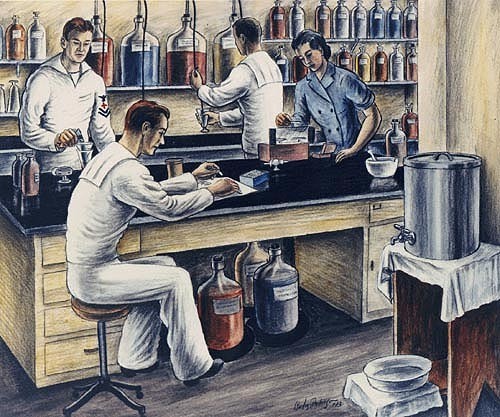
A WAVE and three enlisted pharmacist’s mates working at a lab bench, 1943. (US Naval History & Heritage Command)
As a pharmacist, I found much about my profession has changed, but some things have not—the personal concern for patients, the difficult balance between health care and business, and the struggle to gain respect in the physician-dominated health-care world. First we looked at the role of the pharmacist in the 1940s, then we took a visit to the local drugstore and saw how its role changed during the war, and today I’ll review the rather shocking role—or lack thereof—of pharmacy and pharmacists in the US military.
While researching the military medical system for my World War II novels, I read about physicians and nurses, dentists and veterinarians. But where were the pharmacists? In the civilian world, the physician prescribes medication, the pharmacist purchases, compounds, and dispenses, and the patient or nurse administers. I discovered the wartime military system differed. As a pharmacist I was baffled and intrigued.
My research eventually inspired my novel On Distant Shores, which follows Army pharmacist Tech. Sgt. John “Hutch” Hutchinson and flight nurse Lt. Georgie Taylor through Sicily and Italy.

Pharmacy at Percy Jones General Hospital, Battle Creek, MI (US National Archives)
Drug Distribution in the Military
In the US Army and Navy, outpatient prescriptions were filled at base or unit dispensaries, while inpatient orders were filled at hospital pharmacies. Both dispensaries and pharmacies were staffed by enlisted personnel—pharmacy technicians in the Army and pharmacist’s mates in the Navy—under the control of physicians. In 1936, the pre-war Army had forty graduate pharmacists serving as enlisted technicians.
Pharmacy technicians did not need any previous health care background or education. They went through a three-month program based on practical training rather than scientific understanding.
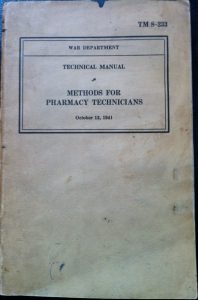
Army technical manual TM 8-233
Methods for Pharmacy Technicians
October 13, 1941
Medical Administrative Corps
For decades, pharmacy organizations had lobbied for a Pharmacy Corps with commissioned pharmacists. Indeed, most nations had similar corps. However, the US Army Medical Department thought of pharmacists in a condescending manner as businessmen rather than professionals, and they saw their drug distribution system as adequate.
The Medical Administrative Corps was formed in 1920 as a compromise. The MAC was responsible for administrative duties within the Medical Department, including medication procurement and distribution. In 1936, the MAC was permitted to commission sixteen pharmacists, with future appointments in the MAC restricted to graduate pharmacists.
The number of officers in the MAC increased during the war. In 1943 six hundred graduate pharmacists served as MAC officers—but none of them served as pharmacists.
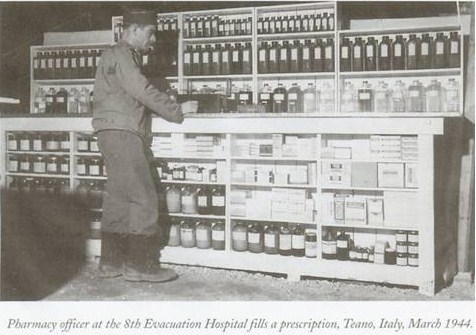
Pharmacist at the US 8th Evacuation Hospital, Teano, Italy, March 1944 (US National Archives)
Options for Pharmacists
Since most draft-age pharmacists had four-year bachelor’s degrees, they were eligible to serve as officers. While physicians, nurses, dentists, and veterinarians were commissioned as officers and placed in appropriate positions, no such option was available for pharmacists.
Upon enlistment, pharmacists could apply for the Army Officer Candidate School, but upon graduation, they could be assigned anywhere. Pharmacists served as infantry officers, artillery officers, and in many other divisions. Even if they happened to be assigned to the MAC, as noted above, they did not practice their profession.
If a pharmacist wanted to compound and dispense medications, his only option was to serve as an enlisted technician, with pay and privileges below that of an officer.
Fight for a Pharmacy Corps
The American Pharmaceutical Association (APhA) renewed the legislative battle for a commissioned Pharmacy Corps. The Surgeon General’s office argued that “Army pharmacy was simpler than civilian practice. The department’s three-month pharmacy technician course was sufficient preparation. There was little compounding. Since medications were furnished in tablet form, ‘any intelligent boy can read the label’” (1).
These arguments did not sit well with pharmacists—or with the general public. Dr. Evert Kendig of the APhA argued that “Army pharmacy technicians were given responsibility beyond that legally permissible in civilian life even as the Army misused its professional pharmacists” (1). Several incidents were reported of prescriptions improperly filled by technicians and of blatant physician prescribing errors that would have been caught by a pharmacist. Public opinion tipped the scale, and on July 12, 1943, President Roosevelt signed legislation authorizing the formation of the Pharmacy Corps.
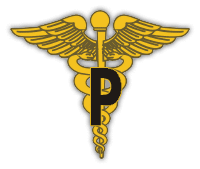
Insignia for the US Pharmacy Corps
Pharmacy Corps
The Pharmacy Corps was authorized to commission seventy-two pharmacists. However, the military moved slowly. In January 1944, after receiving 900 applications and conducting two-day written examinations, physical examinations, and interviews, twelve officers were commissioned. By January 1945, the Pharmacy Corps had only commissioned eighteen pharmacists. The other officers’ slots were filled by former MAC officers.
The drug distribution system did not change by the end of the war, but the formation of the Pharmacy Corps laid the groundwork for post-war reforms.
Resources:
Ginn, Richard VN. The History of the US Army Medical Service Corps. Washington DC: Center for Military History, 1997. (Accessed February 6, 2011 at http://history.amedd.army.mil/booksdocs/HistoryofUSArmyMSC/msc.html).
Worthen, Dennis B. Pharmacy in World War II. New York: Pharmaceutical Products Press, 2004.
Today in World War II History—May 13, 1941
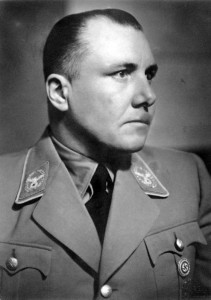
Martin Bormann, 1939 (German Federal Archive: Bild 146-1968-100-21A)
75 Years Ago—May 13, 1941: Martin Bormann replaces defected Rudolf Hess as Nazi Party Chancellor, third in command to Hitler. Hitler cancels all courts-martial for German soldiers during the upcoming invasion of the USSR, permits execution of civilian leaders.
May 12, 2016
Today in World War II History—May 12, 1941
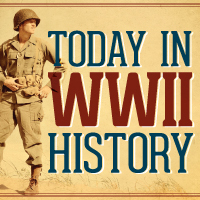 75 Years Ago—May 12, 1941: A German bomber carrying a Luftwaffe liaison to Iraq lands in the middle of an air battle, and the liaison is killed.
75 Years Ago—May 12, 1941: A German bomber carrying a Luftwaffe liaison to Iraq lands in the middle of an air battle, and the liaison is killed.
May 11, 2016
Pharmacy in World War II: The Drugstore

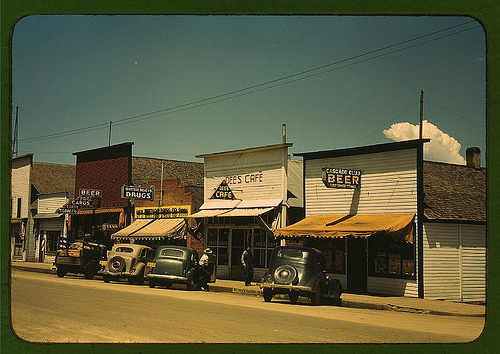
Street scene, including drugstore, Cascade, Idaho, 1940s (Library of Congress)
In my novel Anchor in the Storm, which released May 3, 2016, the heroine, Lillian Avery, serves as a pharmacist in a drugstore in Boston during World War II.
As a pharmacist, I found much about my profession has changed, but some things have not—the personal concern for patients, the difficult balance between health care and business, and the struggle to gain respect in the physician-dominated health-care world. Earlier I discussed the role of the pharmacist in the 1940s, today we’ll visit the local drugstore and see how its role changed during the war, and then I’ll review the role of pharmacists in the US military.
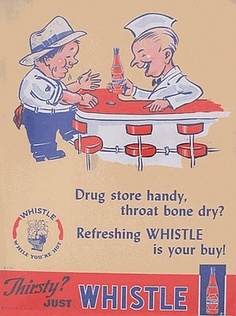 Welcome to the Corner Drugstore—1939
Welcome to the Corner Drugstore—1939Perkins’ Drugs stands on the corner of Main Street and Elm, where it’s stood all your life. Large glass windows boast ads for proprietary medications and candy, and a neon mortar-and-pestle blinks at you. When you open the door, bells jangle. The drugstore is open seven days a week, sixteen hours a day, so you know it’ll always be there for you. To your right, old-timers and teenagers sit at the soda fountain on green vinyl stools, discussing politics and the high school football game. The soda jerk waves at you.
You pass clean shelves stocked full of proprietary medications, toiletries, cosmetics, hot water bottles, hairpins and curlers, stockings, cigarettes, candy, and bandages. You know where everything is—and if you can’t find it, Mr. Perkins or his staff will be sure to help you.
The owner, Mr. Perkins, is hard at work behind the prescription counter with good old Mr. Smith and Mr. Abernathy, that new young druggist Mr. Perkins hired last year. Mr. Perkins greets you by name, asks about your family, and takes your prescription. He has to mix an elixir for you. If you don’t want to wait, he’ll be happy to have his delivery boy bring it to your house. But you don’t mind waiting. You have a few items to purchase, and you’d love to sit down with a cherry Coke.
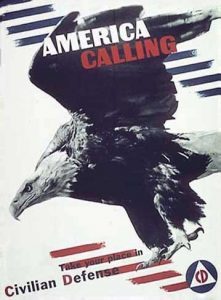 Welcome to the Corner Drugstore—1943
Welcome to the Corner Drugstore—1943Perkins’ Drugs still stands at the corner of Main Street and Elm. Large glass windows boast Army and Navy recruitment posters. The neon sign has been removed to meet blackout regulations. The store is open for fewer hours since Mr. Smith retired and Mr. Abernathy got drafted. Mr. Perkins hired Miss Freeman. Not many people are thrilled to have a “girl pharmacist,” but if Mr. Perkins trusts her, that’s good enough for you. Perkins’ Drugs and Quality Drugs on the other side of town alternate evening hours so the town’s needs are met.
A placard on the door reminds you that Perkins’ Drugs is authorized by the Office of Civilian Defense as a pharmaceutical unit, meaning the store will provide a kit of medications and supplies for the casualty station in case of enemy attack. You pray the town will never need it.
Bells jangle when you open the door. The soda fountain is closed. Mr. Perkins can’t buy metal replacement parts for the machine, the soda jerk is flying fighter planes over Germany, and sugar is too scarce a commodity.
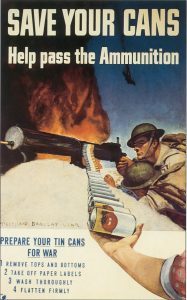 A barrel stands by the door. You toss in five tin cans, washed, labels removed, tops and bottoms cut off, and flattened. Mrs. Perkins at the cash register thanks you.
A barrel stands by the door. You toss in five tin cans, washed, labels removed, tops and bottoms cut off, and flattened. Mrs. Perkins at the cash register thanks you.
You pass clean shelves with depleted stocks. Proprietary medications, cosmetics, toiletries, and medical supplies remain, but rubber hot water bottles, silk and nylon stockings, hairpins and curlers, candy, and cigarettes are in short stock—or unavailable. Most of the packaging has changed. Metal tins have been replaced by glass jars and cardboard boxes. You pick up a bottle of aspirin and a tube of toothpaste, double-checking that you brought your empty tube. Without that crumpled piece of tin, you couldn’t purchase a replacement. Tin is too dear.
At the prescription counter, Mr. Perkins greets you by name and asks about your family. Miss Freeman gives you a shy smile and you smile back. There’s a war on and women have a patriotic duty to do men’s work so men are free to fight. Mr. Perkins frowns at your prescription for an elixir. He’s used up his weekly quota of sugar, and his stock of alcohol and glycerin are running low. Would you mind capsules instead? Of course not. Mr. Perkins phones Dr. Weber and convinces him to change the prescription. Mr. Perkins can’t have the prescription delivered—he doesn’t qualify for extra gasoline and he couldn’t find a delivery boy to hire anyway.
You and Mr. Perkins discuss war news as he sets up a wooden block with little holes punched in it, then lines the pockets with empty capsule halves. He weighs powders on a scale, mixes them in a mortar, then fills the capsule shells. After he sets the capsule tops in place, he puts the capsules in an amber glass bottle with the familiar Perkins’ Drugs label.
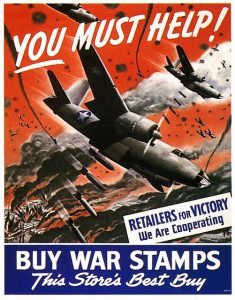 You buy a few War Stamps. Your wages are higher than ever with the war on, and with all the shortages there’s nothing to buy. Besides, War Bonds and Stamps are a solid financial investment and your patriotic duty.
You buy a few War Stamps. Your wages are higher than ever with the war on, and with all the shortages there’s nothing to buy. Besides, War Bonds and Stamps are a solid financial investment and your patriotic duty.
Mr. Perkins thanks you for your purchase, and you thank him for his service. War or no war, you know Perkins’ Drugs will always be there for you.
Resources
My main source was this excellent, comprehensive, and well-researched book: Worthen, Dennis B. Pharmacy in World War II. New York: Pharmaceutical Products Press, 2004.
http://www.lloydlibrary.org (Website of the Lloyd Library and Museum, which has many articles and resources on the history of pharmacy).
Today in World War II History—May 11, 1941

German troops en route to occupying Aegean Islands, May 1941 (US Army photo)
75 Years Ago—May 11, 1941: Germans complete occupation of Aegean Islands.



